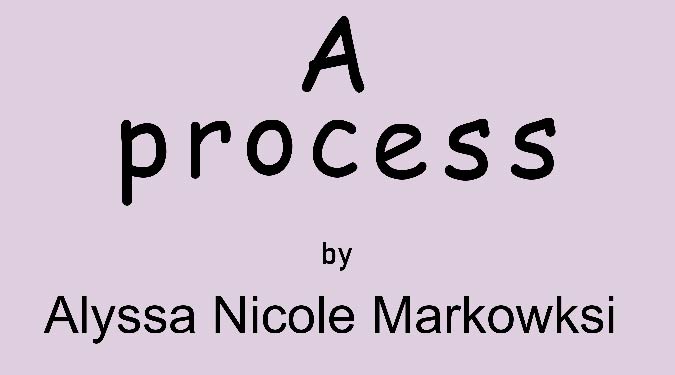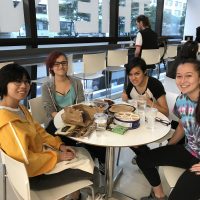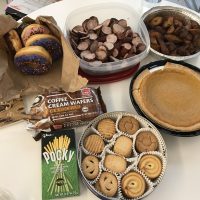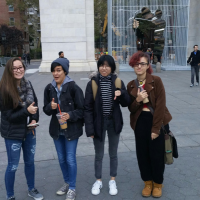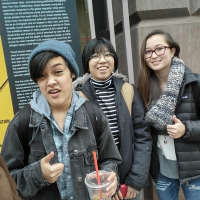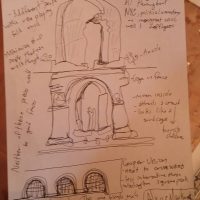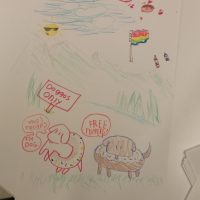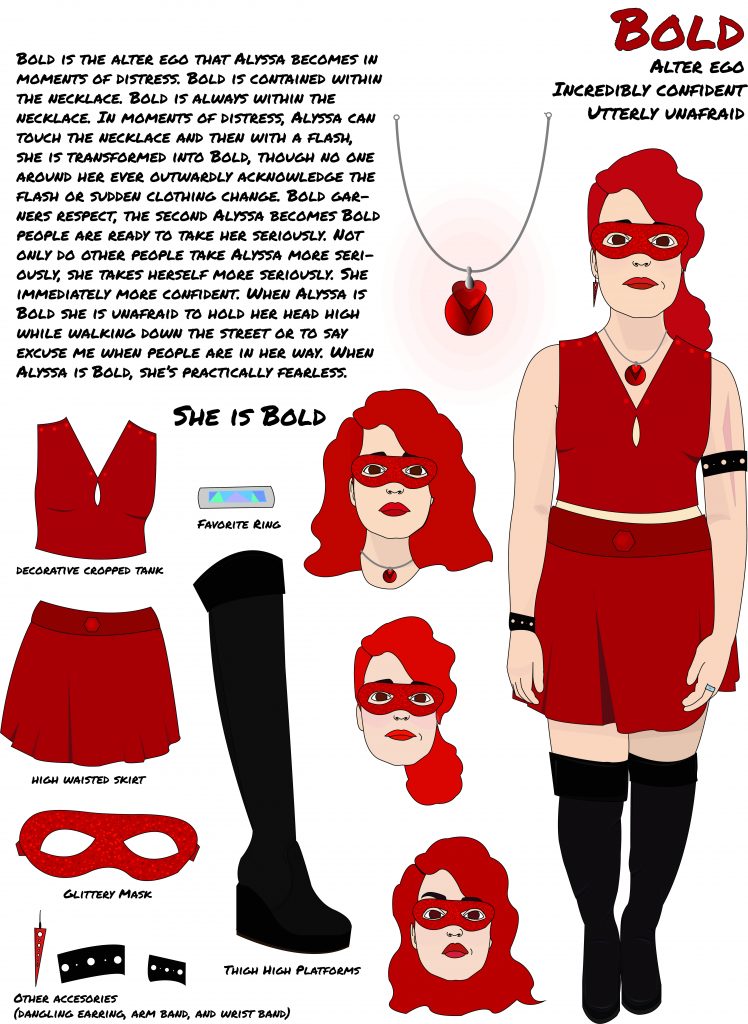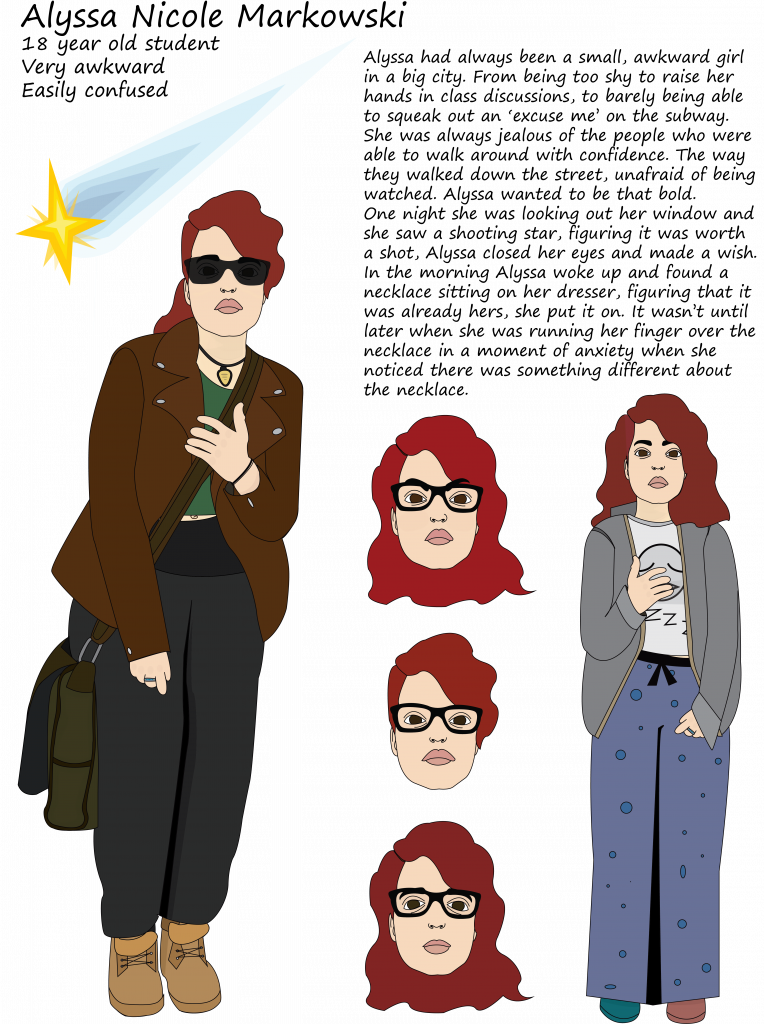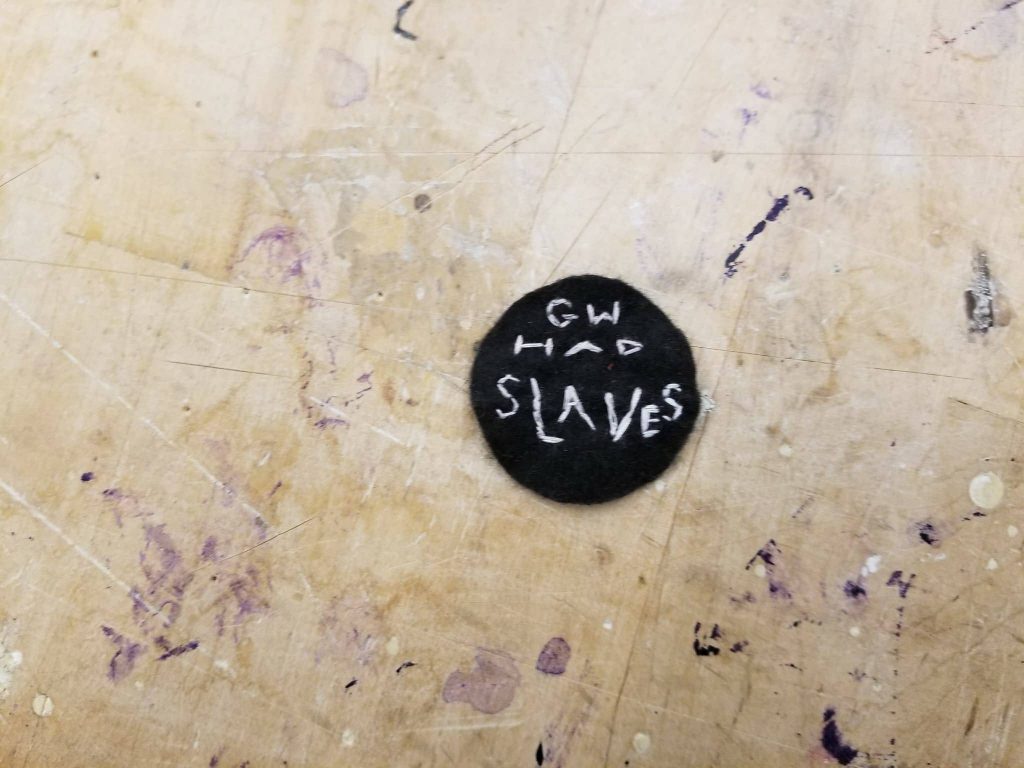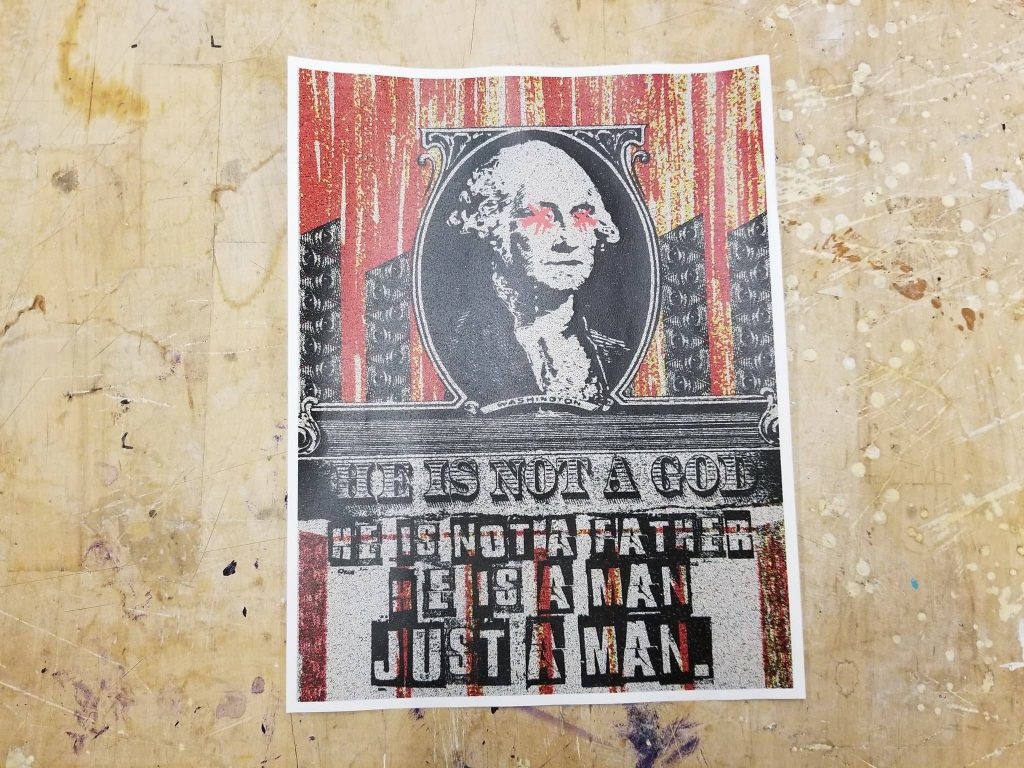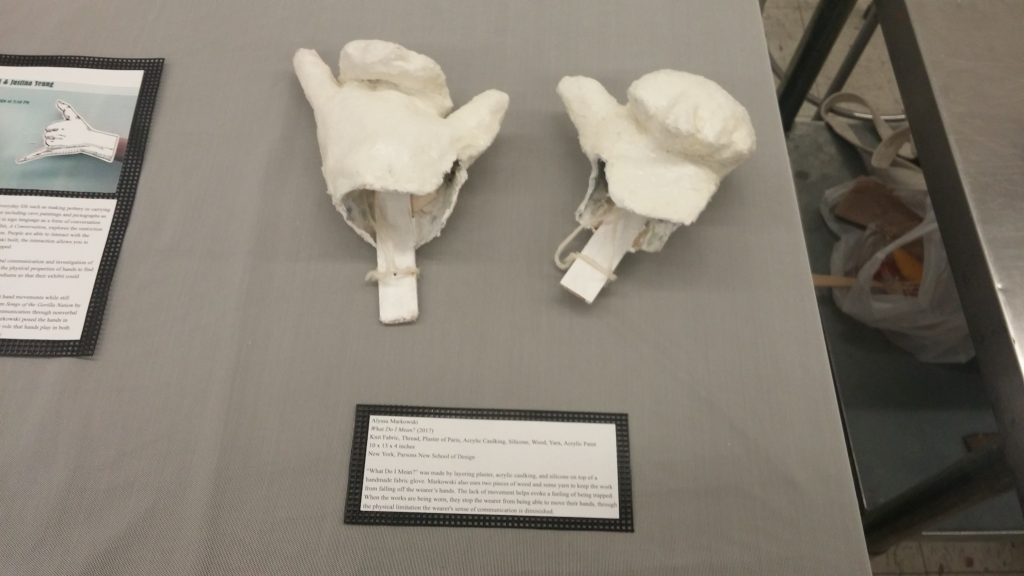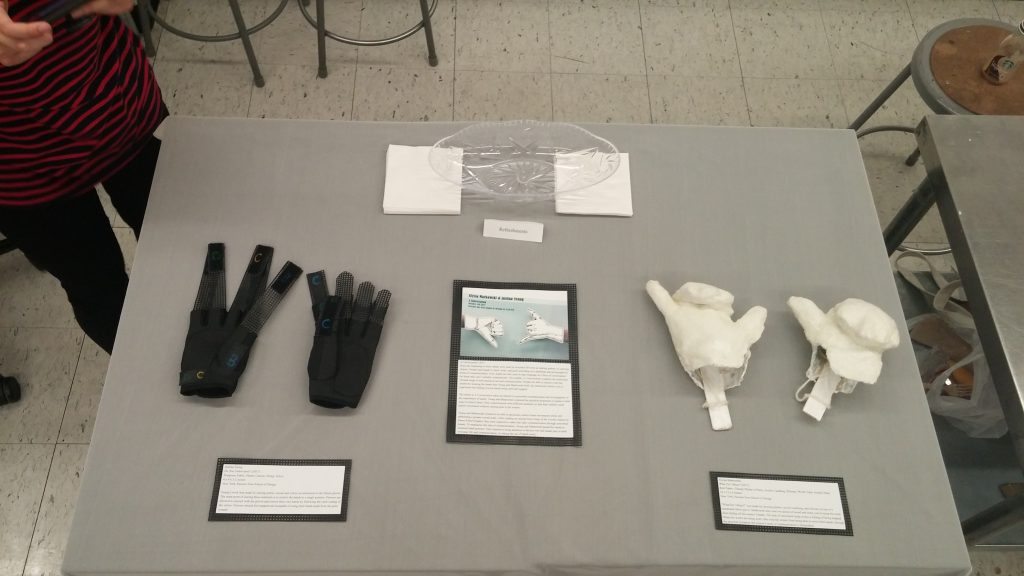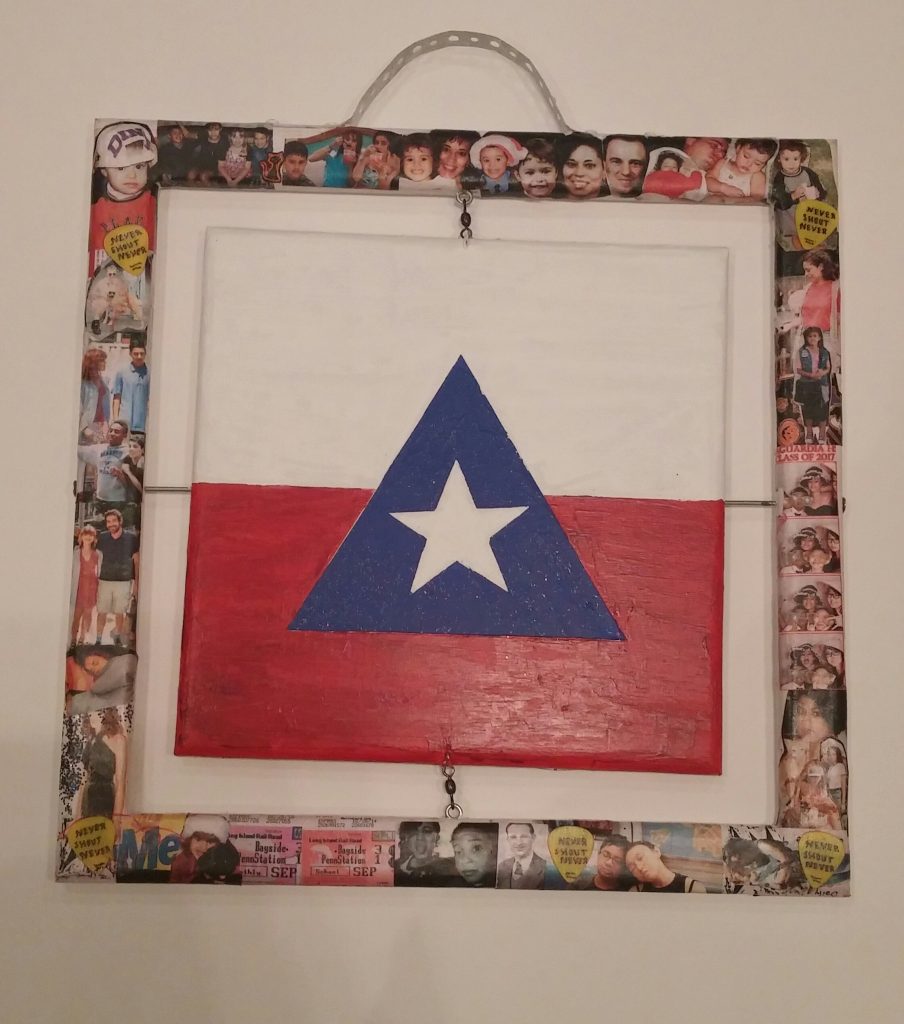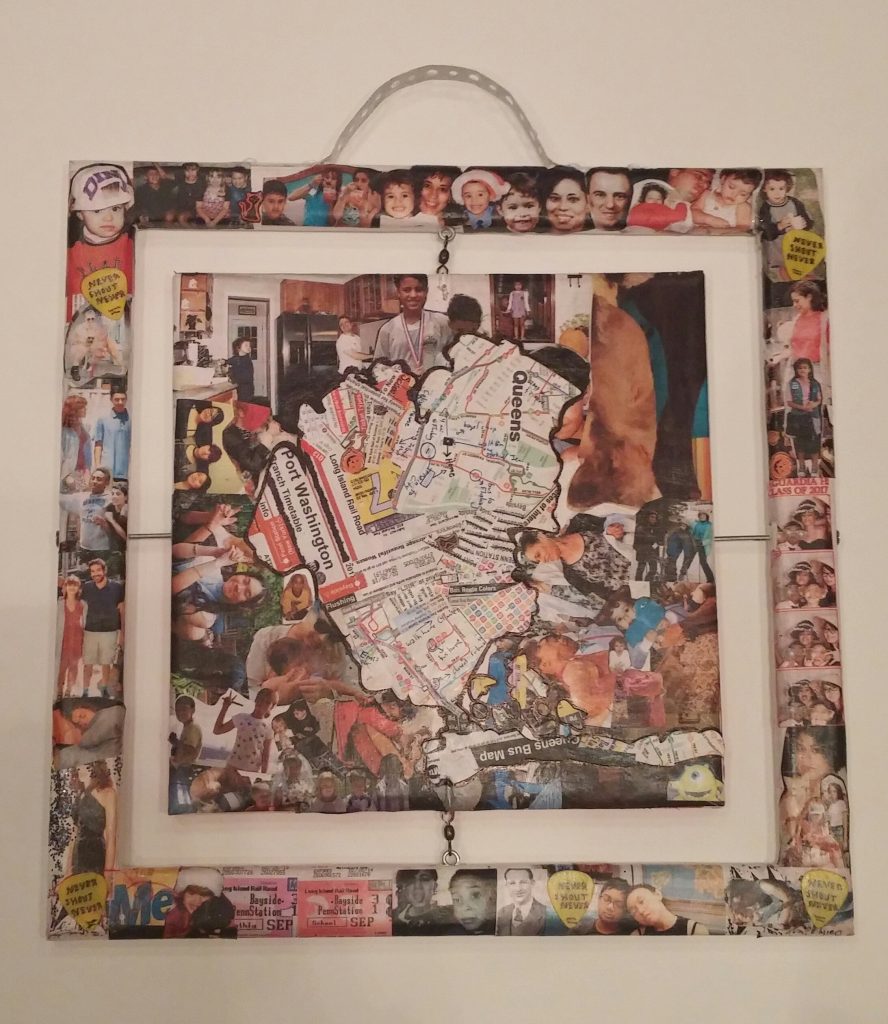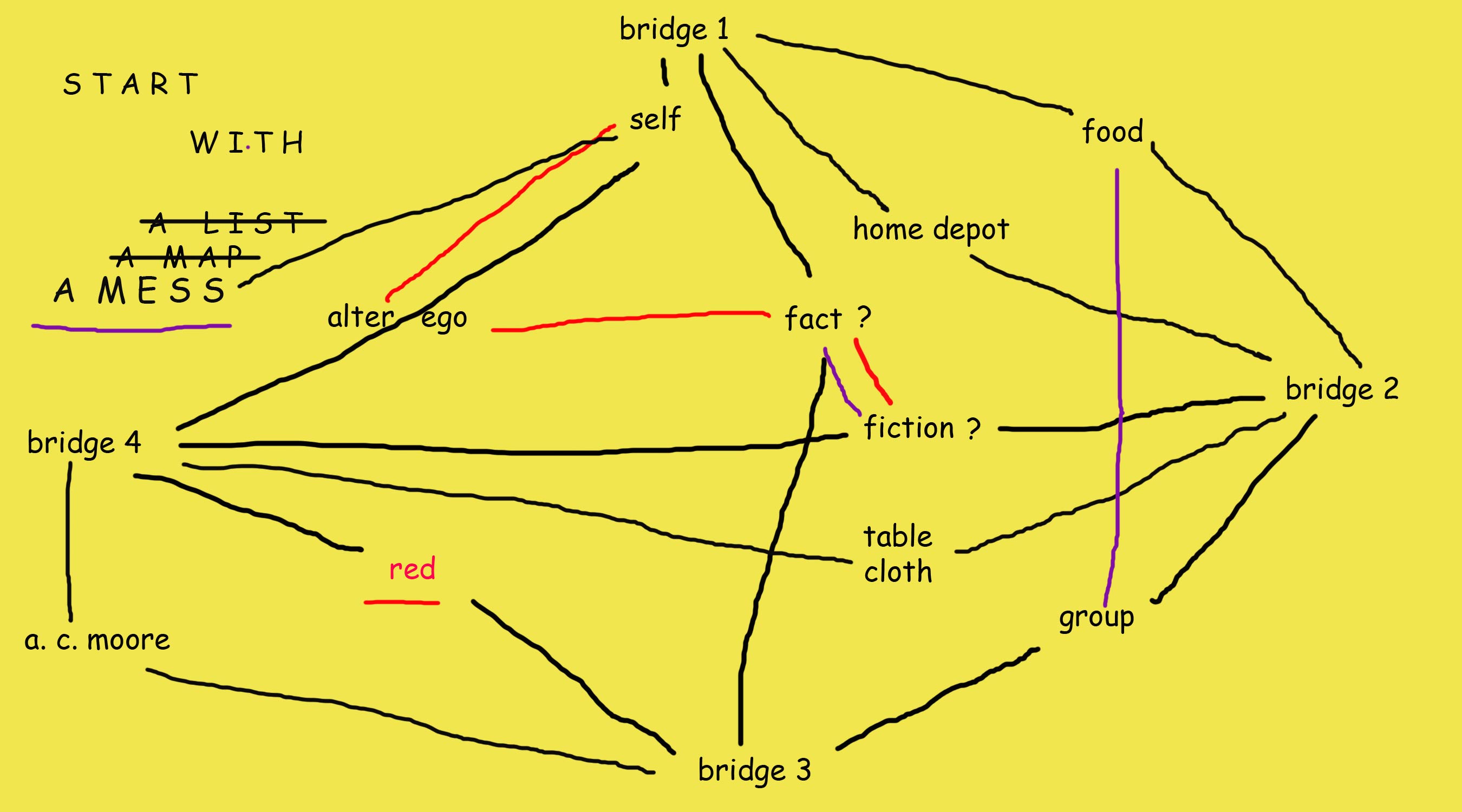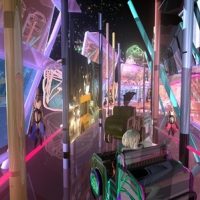My final Integrative Studio/Seminar 1 Project
Artist Statement:
My philosophy is that you can’t tell if you’ll like a material until you try it out. During the year I’ve been able to study the human body, myself as a person, and the way that people interact with site-specific interventions. I’ve done this by working with a wide variety of materials and techniques from wood to baked goods. Through each of these materials, I’ve tried to enhance my projects, being sure that the materials supported the meaning. Everything from texture to color has to be considered when attempting to create a truly cohesive piece. Experimenting with materials helped me to learn not only what I like using, but what materials I would never want to use again. I definitely want to return to creating movable projects with wood and metal connections and to take a swing at large scale embroidery.
Throughout the semester we focused a lot on the idea of ‘self’ and where we see ourselves in the society that we live in. We started out the semester looking at the ways that you can look at yourself and perceive yourself through literature and ended the semester by searching for importance beyond ourselves. The idea of looking past ourselves to see the bigger picture is incredibly important in regards to perceiving yourself as a member of a society. The ideas of self and membership within a society are topics that I want to expand upon and further research in both my reading and my artwork.
One of the best ways to explore the idea of self through art is to reflect on past artwork and experiences. The experience that pulled me to apply to an art high school (and then years later an art college) was taking a short three-day art class during my 7th-grade spring break. I was able to paint a fish much better than I thought I would have been able to and I was able to enjoy myself doing it. From that day on I knew art was something I couldn’t give up. Though I still don’t have a developed art style I definitely pull a lot of inspiration from Disney movies, old Nickelodeon cartoons, and my family and pets, all things that I hold dear to my heart. Due to the amount of inspiration I get from my family, friends, and pets, I plan to explore the idea of family in the future.
Artist Bio:
Alyssa Nicole Markowski was born, raised, and currently reside in Queens, New York. Markowski has been commuting from Queens to attend school in Manhattan for the last four and a half years. She spent four of those years at acclaimed performing art high school, Fiorello H. LaGuardia High School, and she is currently in her freshman year at The New School. She is in a dual degree program where she simultaneously studies Illustration at Parsons and Psychology at Eugene Lang.
Consideration of Texts:
Throughout the year I’ve had to read and connect a large variety of texts, many that don’t seem to have any relation when you first look at them. Having to connect such different texts together has made me work more on my critical thinking and the way that I interpret a reading. When you have to try and find a connection between readings like MIA’s “Bad Girls”, a controversial rap song, and “The Mysticism of Work” by Simone Weil, a philosophical look at morals and opportunity, you’re forced to really search for the heart of the reading.
A skill that I’ve gained from the seminar readings is not just to compare songs to text readings, but the ability to look at songs in the way that you would look at an academic reading. Before this year I had never been assigned a song as a text that I need to read, but after looking at a number of songs in that way I feel as though a door has been opened. Songs like “I Get Overwhelmed” by Dark Rooms are much more powerful when you read the lyrics along with the song and actually try to interpret the words. One of the lines from the song “Did she die in the night? And leave you alone”, hits me as one of the most powerful parts of the song because it can be looked at in so many ways. It can be looked at in a tragic way, the idea of losing a loved one, but it can also be looked at as selfish. It’s less of a sorry that the person lost their life and more of a ‘look how this death affected me’.
On top of the readings and completed projects, we had a number of exercises throughout the 5 bridges. Out of all the exercises, my favorite was the collective dinner in bridge 3. The collective that I was apart of, The Five Footers, didn’t plan out what we were bringing to each other, so we ended up with more if a large desert than an actual dinner. Between the collective dinner, the collective exercises during class, and the park exploration we were able to more fully developed who we were as a collective.
- The Five-Footers sharing a meal
- The Five-Footers “Desert for Dinner”
- The 5 Footers at Washington Square Park
- The 5 Footers at Cooper Union
- Sketches and notes from Park exploration
- A collective class activity
Consideration of Materials:
Through studio I tried to not only use materials that I felt would further the concept of my project, but also to use materials that I hadn’t experimented with much before. I’ve been trying to use as many different materials as I can throughout freshman year so that I can have a better idea of what materials I like and what materials I don’t by the time sophomore year rolls around. Before this year I had only experimented with the idea of using wood and metal to create moving joints once before, in a project I have yet to finish. After creating the moving frame in bridge 1, I definitely want to further explore moving projects. On the opposite side of the spectrum, using silicone and plaster the way I did in bridge 2 was something I would not want to replicate. I didn’t know the materials well enough before starting the project and I ran into a lot of problems with the materials drying, holding together, and the overall coloring of the project. Bridge 3 and 4 feel more within my comfort zone and helped me improve skills that I already had. Bridge 3 also made me want to make more felt patches because I realized how relaxing hand embroidering can be.
- Bridge 4: Poster of alter ego
- Bridge 4: Poster of myself
- Bridge 3: One of our patches
- Bridge 3: One of our flyers (by Michelle Tu)
- Bridge 2: my pair of hands
- Bridge 2: Final Exhibit
- Bridge 1: Side 1 of personal flag
- Bridge 1: Side 2 of Personal Flag
Mind Map:
For my mind map project, I decided to create an animation. I wanted to project to go through the process that I follow when working on a project. I always start with a list, which always ends up being a complete mess. I almost always end up scrapping the first list and making a second, slightly more coherent list. After that, I experiment with technics and materials before launching into the creation of the actual project. During my animation, there was a mind map that I created listing some of the connections between my past 4 studio projects.
- A mind map within a ‘mind map’
Personal Reflection:
When we first got the assignment sheets for bridge 5 I was pretty nervous because I didn’t think there were many connections between the past 4 bridge projects that I’ve done. Looking through my past LP posts helped me to not only find connections but to notice that I big part of the art that I do is not only the finished product but the process to get there. I like to look at the process as both an exploration and a learning experience, and that has stayed consistent with all 5 of my bridge projects.
I’ve often thought that giving a lot of meaning to the materials that you use, whether intrinsic or extrinsic, was unnessacary because it would get lost in the final production of your work. Through the semester I’ve learned that I was wrong. Using materials that have a connection to the meaning of your work gives your work more depth and even if it’s an intrinsic meaning it can be explained through artists statements or by simply talking to people about your work. The first time that the advantages of tying a large portion of the artworks meaning to the material became aware to me was during bridge 1 when Isabel described the meaning of the VCR tape she used for her project and the meaning of the word she had written on that. Before that I would try to keep the meaning of the materials in my project minimal, for example, I used wood for my bridge 1 project and that held intrinsic meaning but the meaning was not central to the understanding of the piece.
I’ve also been influenced by the work of artists and authors we’ve looked at in both studio and seminar, especially the work of Jacolby Satterwhite. Satterwhite’s work has an almost messy feel to how overwhelming all the aspects that he adds are. His work is not something that I find visually appealing which is why I was so surprised that I was drawn to it. I often try to make my sketchbooks colorful, layered, and overwhelming but it is not something that I’ve felt I should bring into more finished pieces because of the messiness of it. Seeing the way that Satterwhite makes his work almost purposefully messy definitely helped inspire my bridge 5 animation.
I’ve also taken inspiration from Shoshanna Weinberger and the way that she represents women. I often draw faces that have huge lips and no nose throughout my sketchbook, mostly because I like the aesthetics of it. I also love to draw silhouettes and write phrases along the bodies of many of the figures that I draw so it felt almost natural to take inspiration from Weinberger’s work. Though my noseless people don’t hold a candle to Weinberger’s dirty bottom pin-ups, there is something about them that thoroughly intrigues me.
- Jacolby Satterwhite
- Shoshanna Weinberger
I’ve also drawn inspiration from the readings in seminar. My bridge 2 partner project with Justina was largely inspired by Songs of the Gorilla Nation by Dawn Prince-Hughes. Throughout the reading, she talks about nonverbal communication and sign languages and that is what inspired Justina and I to restrict the hands. Not only did it inspire us to restrict the hands, it also inspired us to use well-known hand gestures as the way that we restrict the hands. I also take inspiration from the song texts that we go over in seminar though in a much less direct way. I chose a song from the songs that we have gone over during whatever bridge I’m currently working on and I listen to it on repeat while working on my studio project. For example, I listened to “I Get Overwhelmed” by Dark Rooms on repeat for hours while working on bridge 4 and throughout bridge 5 I’ve been listening to “Everyone Looks Like Everyone Else” by The Pack A.D., “I Get Overwhelmed” by Dark Rooms, and “Nobody Dies” by Thao & the Get Down, to reflect on the semester.


